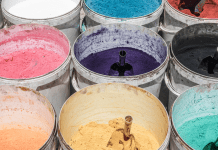Laboratory work accuracy, safety, and reliability depend on properly handling microscope slides. In any clinical, research, or education setting, how a technician or scientist treats slides determines the quality of the specimen observed, the clarity of the observation, and the longevity of the equipment. Proper learning of slide handling techniques guarantees that all samples are well preserved, contamination is avoided, and that diagnostic or research results are reliable. Jiangsu Huida Medical Instruments Co., Ltd, a world leader in laboratory consumables, advocates for best practices in the handling of microscope slides with decades of industry experience. There are key tips professionals should follow to treat microscope slides and coverslips like experts. Below are the tips.
Handle Slides by the Edges
Direct contact with the flat surfaces of microscope slides should never be made. Experts hold slides only by the edges, not to contaminate and smudge them. This maintains the clarity of the viewing area and eliminates the skin oils from staining or analysis. Correct holding of the slides also significantly decreases the risk of dropping or cracking them, which is quite important when working with delicate materials (super white glass or cover slips).
Inspect Slides Before Use
All slides should be examined for cleanliness and damage before use. A fast visual inspection allows detecting of any cracks, scratches, dust particles, or manufacturing faults. The use of damaged or dirty slides may affect the quality of microscopic images and add artifacts to the observation. Laboratories that use high precision slides from reliable manufacturers such as Huida normally enjoy pre-cleaned and uniform products that require minimal re-cleaning or reprocessing.
Use the Right Slide for the Application
Professional laboratory personnel know that not all slides are equal. Plain slides are appropriate for non-complicated samples, while frosted, adhesive, or coated slides are for more sophisticated procedures, like immunohistochemistry, or cytology. Selecting the correct slide guarantees that the specimen adheses properly and is compatible with staining or labeling procedures. For example, the positively charged and silane-coated slides of Huida are specifically made for tissue sectioning and sample detachment prevention in processing.
Clean Slides Appropriately When Needed
Proper cleaning is essential. Especially when reusing slides or preparing the slides for specific procedures. Cleaning of slides usually involves different methods. These are soaking them in a detergent solution, rinsing them with distilled water, and sometimes treating them with alcohol or acid solutions to remove residues. Slides are then to be dried in a dust-free environment before use. Huida offers information on slide cleaning, so that laboratories that use their product can maintain the high standards of quality without harming the glass.
Avoid Excessive Pressure During Mounting
Overapplication of pressure when mounting specimens or when placing cover slips can cause slide breakage or distortion of the sample. Experts carefully put specimens and apply little force to avoid uneven settlement of the cover glass. Slides and cover glasses of exact thickness and dimension standards—like those produced by Huida—minimize the risk of damage and compatibility with mounting media and observation techniques.
Label Slides Clearly and Correctly
Slide labeling serves for sample tracking and organization. Professionals use a slide printer or permanent markers to clearly mark slides, without interfering with the viewing area. Proper labeling eliminates confusion in analysis and allows samples to be associated with patient records or research data. Huida’s line of slide accessories, such as slide laser printers and the color-coded slides for the busy laboratory environment, expedites labeling and identification.
Store and Transport Slides Safely
Microscope slides should be stored and transported in a way that will prevent breakage and contamination. Professionals use slide trays, mailers, and storage boxes to store slides and prevent them from environmental exposure. These accessories are especially important for preserving prepared slides or shipping samples from one place to another. Huida’s accessories lineup, from hard plastic mailers to slide storage systems, offers durable solutions to ensure slides are safe and intact.
Conclusion
Proper handling of microscope slides is not just another basic lab exercise – it is a professional skill that influences every step of laboratory work, from sample preparation to final analysis. Using the practices of experts in cleanliness, handling, labeling, and storage, the integrity of each slide is preserved. Huida is one of the leading suppliers of premium microscope slides and laboratory accessories, and it helps laboratories obtain the highest standards of precision and reliability. For professionals who want to improve their technique and keep up with superb lab practices, learning these critical slide-handling tips is a basic step to excellence.












